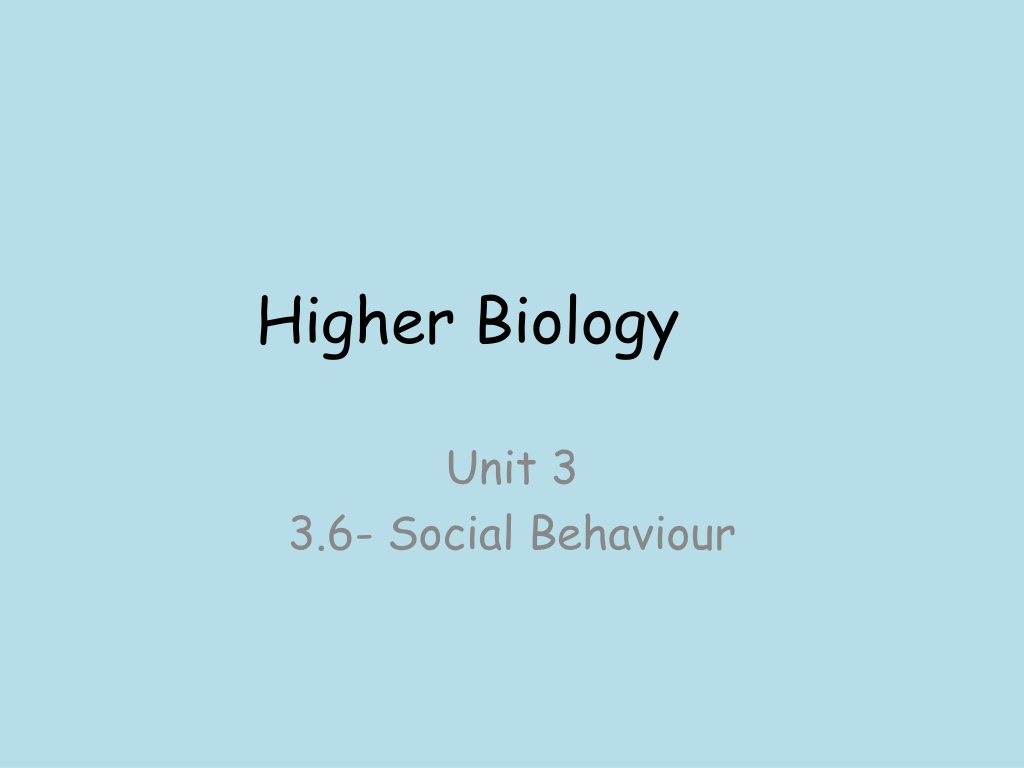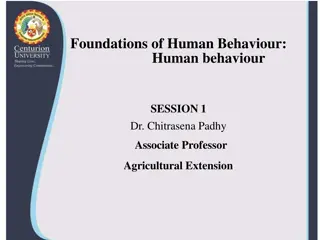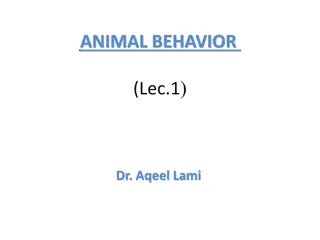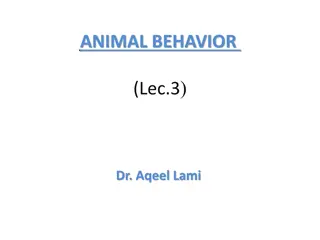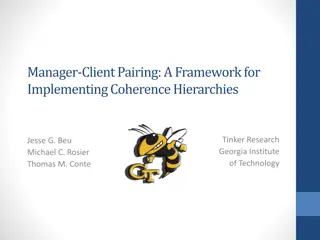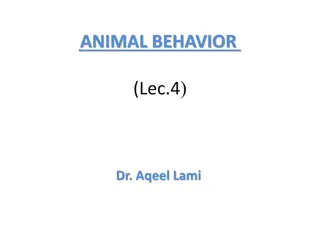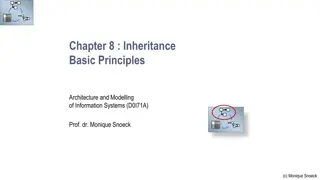Understanding Social Hierarchies in Animal Behavior
Social behavior in animals involves living in social groups, establishing social hierarchies, and exhibiting dominance behaviors. Animals have developed various signals and behaviors to interact successfully within these groups. Social hierarchies offer advantages such as increased chances of survival, minimized aggression, and energy conservation. Dominance is evident in species like birds and mammals, with dominant individuals exerting control over others through ritualized displays of dominance. Cooperative behavior, such as cooperative hunting in killer whales and lions, also plays a significant role in ensuring group success.
Download Presentation

Please find below an Image/Link to download the presentation.
The content on the website is provided AS IS for your information and personal use only. It may not be sold, licensed, or shared on other websites without obtaining consent from the author. Download presentation by click this link. If you encounter any issues during the download, it is possible that the publisher has removed the file from their server.
E N D
Presentation Transcript
Higher Biology Unit 3 3.6- Social Behaviour
Social Groups Many types of animal live in social groups. A social group can consist of as few as 2 members ranging to several thousand. To live and interact successfully in these groups animals have developed behaviours and signals.
Social hierarchy Social hierarchy is a system where members of a group are organised in order of rank An individual of a higher rank dominates and exerts control over lower ranked individuals
Advantages of Social Hierarchies Systems of social hierarchies increase a species chance of survival Aggression is ritualised and involves less cost Real fighting is minimised Serious injury is normally avoided Energy is conserved The strongest animals are more likely to pass on their genes
Bird dominance When newly hatched birds are kept together one bird will emerge as the dominant member This bird will peck and intimidate other birds without being attacked back This bird will get first choice of available food The next ranked bird is able to peck all birds below without being attacked and so on This is called a pecking order
Mammals Social hierarchies exist in some groups of mammals Wolves live in packs with one male being dominant to the others The dominant male is afforded certain rights such as first choice of food and mates The dominant male uses social signals to exert his rank He will use ritualised threat gestures to demonstrate his dominance Other wolves demonstrate their acceptance of his dominance by making submissive responses
Cooperative Hunting Killer whales hunt in groups known as pods They use different strategies to hunt and catch prey Lions use and an ambush strategy where they drive prey towards other lions that are in hiding and ready to pounce Hunting in this manner means that all members of the groups obtain food There is also an increased chance of catching larger prey and gain more food
Social Defence Many types of animal rely on the principle safety in numbers as a means of defence By staying together in large groups they can confuse predators or make it more difficult for predators to catch an individual
Musk Oxen When threatened, musk oxen form a protective group. Cows and calves remain in the centre of the circle and mature males on the outside. Males defend the group using their horns to gore solitary wolves and drive off packs by charging as one group. This is known as mobbing.
Bobwhite Quail Bobwhite quail roost in circles with their heads pointing outwards. If they are disturbed the circles explodes outwards into the predator s face. By the time the predator has recovered from its confusion the birds have flown away to safety.
Altruism Altruism is a process that occurs when an animal behaves in a way that is disadvantageous to itself and advantageous to another The animal putting itself at a disadvantage is known as the donor and the animal receiving the benefit is the recipient
Reciprocal Altruism Reciprocal altruism occurs when one individual provides help to another at a cost to itself with a high chance of the favour being returned
Vampire Bats After a night of hunting vampire bats return to the roost Some will be well fed and others will be hungry Hungry bats beg the others for food by licking their faces The benefit of reciprocal altruism gained by the recipient exceeds the cost to the donor A hungry bat is likely to die if it fails to find a meal two nights in a row
The Prisoners Dilemma After playing the prisoner s dilemma game for yourself think about what is the best course of action for both prisoners https://www.youtube.com/watch?v=p3Uos 2fzIJ0
Prisoners Dilemma The Prisoner s Dilemma demonstrates that if an individual takes the best personal outcome for themselves it results in the worst possible mutual outcome If both individuals trust one another and cooperate this results in the best possible mutual outcome The best possible mutual outcome may not be as beneficial as the best personal outcome but there is a higher chance of achieving this
Kin selection Kin selection occurs when an animal acts in an altruistic way towards another organism that it shares genes with By ensuring survival of family members the animal acting altruistically is helping to ensure that its genes are passed on
Kin Selection An example of kin selection exists in Belding s Ground Squirrels One squirrel acts as a guard for predators making a sound to alert the rest of the group when one approaches This gives the other squirrels a chance to get to safety but attracts the predator towards the calling squirrel
By behaving altruistically the ground squirrel increase the chance of its genes being passed on by its relatives in its groups.
